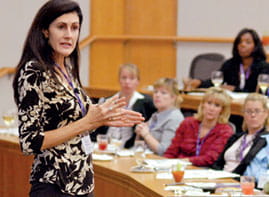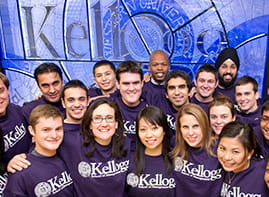Amit Bouri ’07 discusses the challenges and opportunities within impact investing
11/4/2015 -

Amit Bouri '07
A "tectonic shift" is reshaping the landscape of investing, says Amit Bouri ’07, co-founder and CEO of the New York-based
Global Impact Investing Network (GIIN).
“Historically, we've thought about impact and investing as entirely separate things,” says Bouri. “Businesses focused on business, and government and charities focused on making the world a better place. There was a strong structural divide in how we thought about who does what in our society. And this is starting to change very significantly.”
Bouri discussed the changes to impact investing Oct. 28 and 29 as part of the Beacon Capital Partners Executive in Residence program at the Kellogg School of Management. The program fosters dialogue between C-suite leaders and Kellogg faculty and students. Beacon Capital, in partnership with the
Kellogg Public-Private Initiative (KPPI), sponsored the event.
Putting your money to work
GINN’s mission is to expand the scale and increase the effectiveness of impact investing, which it defines as investing in companies, organizations and funds with “the intention to generate social and environmental impact alongside a financial return.” GIIN is a network of more than 200 members in 32 countries — a combination of “big players and small venture capital firms,” says Bouri — that share an interest in using capital to improve the world in some way.
“For many of the folks that we work with, whether they work for big pension funds or at small boutique firms that only do one kind of investment, this comes back to values,” he says. “Impact investing is about empowering you to put your money to work for what you really believe in. So whether you care about climate resilience or sustainable fisheries, investments can be used to finance solutions to a lot of the problems that we’re facing.”
To support the work of individuals and institutions interested in impact investing, GIIN offers a tool called IRIS, which pulls together social, environmental, and financial performance metrics in one place, helping investors “create an informed system to measure performance.”
Can impact investing deliver?
One hurdle to the expansion of impact investing has been skepticism about whether it can deliver competitive returns. This year, GIIN made substantial progress in clearing that hurdle by collaborating with a major investment advisor, Boston-based Cambridge Associates, to create the
Impact Investing Benchmark.
Based on data from 51 private investment funds, the report is “the first comprehensive analysis of the financial performance of market rate private equity and venture capital impact investing funds.” It will be published on a quarterly basis.
“Getting an institution like Cambridge Associates to support this was really critical, because they're very much part of the machinery of capital markets and a leading authority on performance,” Bouri says.
The first Impact Investing Benchmark report found that some impact investments achieved results comparable to or better than conventional funds, particularly those focused on the emerging markets. But Bouri noted that not all impact investments are designed to deliver market-rate returns. Some exist in the middle ground, seeking a blend between philanthropy and commercial return on investment.
“There is this space in the middle that we are still working to build out,” he says. “There is work that needs to be done that is viable and important and has a tremendous impact, but it won't make you rich. It requires a different lens to think about it. And we see investors trying to figure out where exactly they fit in.”
Related reading






